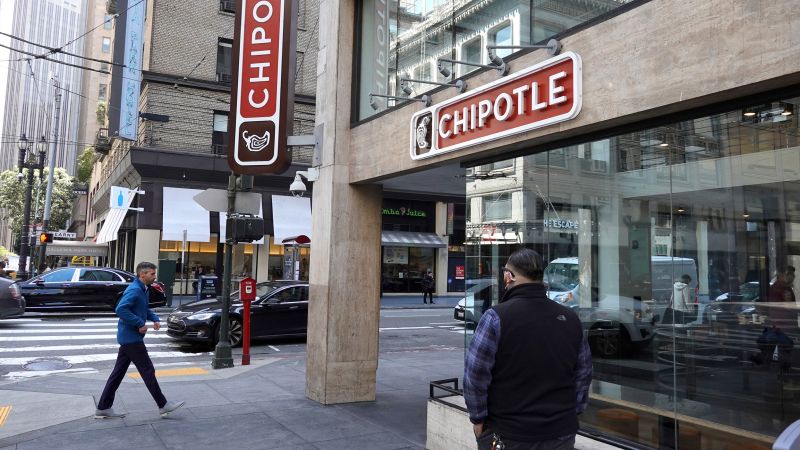At a Glance
In revisiting my previous analysis on Sanofi (NASDAQ:SNY), there are notable developments since we last delved into the company’s financial and clinical landscape. Sanofi’s Q3 2023 financials continue to punctuate an era of mixed results and strategic recalibrations. The company’s headline metrics underscore challenges in net sales and operating income, but a closer look reveals diverging narratives. High-performers like Dupixent and Nexviazyme remain juxtaposed against declining assets like Lantus, underscoring a complex interplay between clinical robustness and market dynamics. The financial implications, particularly the YoY contraction in net sales and operational income, raise the stakes for existing investor concerns. Meanwhile, Sanofi’s adaptive yet precarious pricing strategies and its Consumer Healthcare spin-off—alongside dropped 2025 profit targets—further challenge investor sentiment. Now at an inflection point, the firm either capitalizes on its innovative R&D or risks further erosion in shareholder value. Keep an eye on the shifting sands of Sanofi’s financial and clinical landscape; the stakes couldn’t be higher.
Sanofi’s Q3 Earnings
To begin my analysis, looking at Sanofi’s most recent Q3 2023 earnings report, net sales decreased by 4.1% YoY to $11.36B, and business operating income fell significantly by 11.2% to $3.97B. The Cost of Sales edged up from 29.8% to 31.2% of net sales, indicating shrinking margins. Research and development expenses were slightly down by 4.1% to $1.71B, accounting for 15% of net sales.
Drugs to Watch
-
Dupixent: This is the standout, racking up about $3.02B in sales and growing by 32.8%. The drug is firing on all cylinders globally, with particular strength in emerging markets (+56.7%).
-
Nexviazyme/Nexviadzyme: Though smaller in size at $117M, it’s skyrocketing with 103.4% growth. A jaw-dropping 300% growth in Europe deserves attention.
-
Sarclisa: A solid contributor at around $103M, showing a 34.2% increase. It’s making a significant impact in markets outside the U.S. and Europe, growing at 68.4% there.
-
Praluent: Pulling in about $122M, it’s grown by 44.6%. It’s notably absent in the U.S. following a ruling that it infringed upon Amgen’s patent (AMGN)
-
Aubagio: Indicated for multiple sclerosis, this one’s in freefall following generic entry earlier in the year, plunging to $211M with a -60.5% drop. The U.S. performance is dismal, with a -80.2% decline.
-
Lantus: Once a flagship asset, it has seen a notable erosion in its market position with a 32.9% decline to $364M, a trajectory particularly pronounced in the U.S market where it plummeted by 66.8%. Being a long-acting insulin vital for diabetes management, Lantus has been encircled by a narrative of high pricing, triggering public dissent and political skirmishes. In a strategic pivot, Sanofi has embarked on aggressive price moderation initiatives, the latest being a pact with GoodRx, which now avails Lantus at a flat $35 irrespective of the insurance cover, underscoring a pragmatic approach to salvage market share and neutralize pricing backlash.
Segment Breakdown
-
Specialty Care (Immunology, Neurology, Oncology, Rare Blood Disorders, Rare Diseases): This is where the action is, up 13.5% to $4.92B. The ‘Rest of the World’ region is contributing massively, with a 31.6% upswing.
-
General Medicines (Diabetes and Cardiovascular): Due to price erosions from products like Lantus, this sector’s in the doldrums, down 6.6% to about $3.17B. The U.S. market’s taken a 25% hit, which is worrying.
-
Vaccines: Relatively flat at -0.6%, but it still managed around $3.29B. Europe, however, showed a promising 12.1% growth.
-
Consumer Healthcare (OTC drugs): Not too shabby, up 4.6% to $1.32B. Outside of the U.S. and Europe, it grew at 9.2%.
Notably, Consumer Healthcare contributes approximately $1.32 billion to Sanofi’s total Q3 2023 revenue of about $12.67 billion. To put this into perspective, this segment accounts for roughly 11% of the company’s total revenue.
Note: All figures above were converted from Euro to USD at a 1:1.06 rate.
Sanofi’s Spin-Off Saga: Out with the Old, In with the Uncertain
Sanofi’s recent announcement of spinning off its Consumer Healthcare segment into a publicly listed entity and dropping its 2025 profit target was met with a significant stock price drop, which reflects investors’ reactions to such strategic shifts. This scenario of divesting segments to hone focus on core areas isn’t unique to Sanofi, as several pharmaceutical giants have taken similar steps in recent years. Here’s a breakdown of the situation and its implications, supported by various insights:
Johnson & Johnson (JNJ) spun off its consumer products maker Kenvue earlier in 2023, and GSK (GSK) and Pfizer (PFE) created Haleon in 2022 focusing on OTC drugs. Novartis (NVS) also divested its generic and biosimilar drugs business, Sandoz, to focus on innovative drugs. Sanofi itself spun off its European active pharmaceutical ingredient unit in 2020 as part of a cost-cutting initiative.
Investors appear to be wary due to the abandonment of the 2025 profit target, suggesting a potential earnings dilution in the near term. This decision aligns with Sanofi’s strategy to reallocate resources towards the development of innovative drugs, particularly in immunology and inflammation. The substantial stock price drop post-announcement, with Sanofi shares plummeting to their lowest in over eight months, highlights the market’s initial negative reaction.
Sanofi’s strategic shift echoes a broader industry trend wherein pharma giants are veering towards a more specialized, innovative drug development approach. This realignment, however, comes with near-term earnings pressure, which might not sit well with investors seeking steadier returns. The spin-off could potentially allow Sanofi to channel more resources towards promising areas like immunology, thereby hopefully creating more value in the long run. Yet, the success of this strategy hinges on the successful commercialization of new drug candidates and the ability to regain investor confidence post the spin-off.
The pharma sector’s discernible tilt towards offloading lower-margin, slower-growth divisions to hone in on innovative drug development underscores a strategic evolution. However, the fruitfulness of such realignments is significantly tethered to the parent firm’s R&D prowess and the market viability of the emergent drug pipeline. Stripped of its stable, albeit uninspiring, Consumer Healthcare segment, Sanofi emerges as a more precarious venture.
The juxtaposition of Sanofi’s strategic realignment against similar moves by industry peers offers a nuanced understanding of the investor apprehension. The immediate earnings dilution contrasted against the long-term potential of a more focused R&D strategy encapsulates the risk-reward paradigm inherent in such corporate decisions within the pharma sector.
Peer Comparison
According to Seeking Alpha data, Sanofi (Market Cap: $107.9B) is comparatively undervalued across several metrics relative to its peers: Bristol-Myers Squibb (BMY) ($103.81B), AstraZeneca (AZN) ($190.18B), and Pfizer ($170B). Noteworthy is Sanofi’s lower forward P/E ratios, with a P/E of 3.92 in FY3 being significantly lower than Bristol-Myers Squibb’s 6.67. This might indicate a more appealing valuation or possibly lower anticipated earnings growth. Sanofi’s Price/Sales and EV/Sales ratios are also on the lower spectrum, further signaling potential undervaluation.
In terms of growth, Sanofi shows a mixed bag. Its year-over-year revenue growth of 9.53% is strong, especially when contrasted with Pfizer’s sharp -23.04% decline. However, its forward revenue growth projections are modest. The three-year Compound Annual Growth Rates (CAGRs) for EBITDA and EBIT are commendable, but the negative CAGRs for net income and EPS hint at profitability concerns.
On the profitability front, Sanofi’s gross profit and EBIT margins are competitive, yet its net income margin and Return on Equity [ROE] lag, particularly against Pfizer’s high net income margin of 27.55% and ROE of 23.07%.
Financially, Sanofi is in a healthier position with a total debt to equity ratio of 28.83%, significantly lower than its counterparts, indicative of lower financial risk.
In summary, Sanofi’s lower valuation and financial leverage are highlights, although its mixed growth metrics and certain profitability indicators could pose investor concerns.
My Analysis & Recommendation
Sanofi’s Q3 2023 financial snapshot illuminates a mixed bag of strategic shifts and financial performance. The spin-off of its Consumer Healthcare segment is emblematic of a broader strategic recalibration within the pharmaceutical sector, aimed at honing focus on core R&D efforts. This shift, albeit aligned with industry trends, amplifies Sanofi’s performance pressure, particularly on translating R&D investments into profitable ventures—a historical sore point.
Investors should keep a vigilant eye on Sanofi’s ensuing quarters to ascertain the efficacy of this strategic pivot, especially the performance of high-growth drugs like Dupixent and Nexviazyme, and the impact of aggressive pricing strategies to salvage the market share of assets like Lantus. The market’s reaction to Sanofi’s abandoned 2025 profit targets underscores the importance of monitoring investor sentiment as a barometer of the firm’s strategic realignment.
In mitigating risks, investors might consider a diversified portfolio approach, encapsulating a mix of pharmaceutical firms with varying strategic focuses and financial health. Given Sanofi’s comparatively lower valuation metrics amidst its peers, it presents a potentially undervalued proposition, albeit with an attached caveat of profitability concerns.
A closer scrutiny of Sanofi’s financial health, competitive landscape, and the market dynamics affecting its key drug segments is paramount in understanding the risk and reward profile attached to this pharma giant. The success of Sanofi’s strategic recalibration hinges significantly on its ability to commercialize its R&D efforts effectively amidst a challenging market landscape rife with pricing pressures and competitive skirmishes.
In light of the aforementioned factors, and paralleling the narrative of cautious optimism with an emphasis on a ‘wait-and-see’ approach, a confidence score of 50/100 is posited, aligning with a “Hold” recommendation. The ensuing quarters will be pivotal in either reinforcing or challenging the prudence of Sanofi’s strategic realignment, with a significant emphasis on its R&D commercialization success.
Read the full article here







